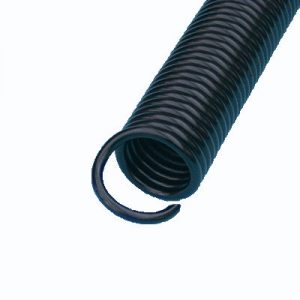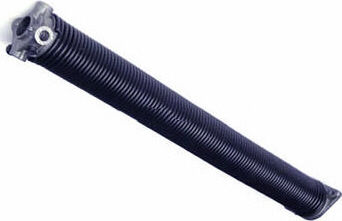Your garage door is most likely the biggest moving object in your house, and it is probably also just as heavy. The garage door spring is what allows the door to open and close without overloading your opener by counter-balancing the weight.
All garage doors have a type of garage door spring; some are visible and some aren’t. This is why a well-tensioned garage door can be operated manually, due to the spring doing the vast majority of the lifting.
Each spring is engineered to take the load of your door. When the tension of your spring is low or the spring simply breaks, the door becomes almost impossible to use. Lifting a door with broken springs should only be attempted by trained technicians to avoid serious injury.
Garage door springs are available in 2 different types:


- Extension type garage door spring – This type of garage door spring can be seen on tilt doors. They are found on the side of the door fixed to a set of power arms. The garage door spring will fully extend when the door is closed, and retract as the door opens

- Torsion type garage door spring – This type of spring can be found on panel doors. They are found on the torsion bar, which is located above the top panel on a front-mount panel door, or at the rear of the horizontal tracks on a rear-mount panel door. This spring exerts its power by twisting.

